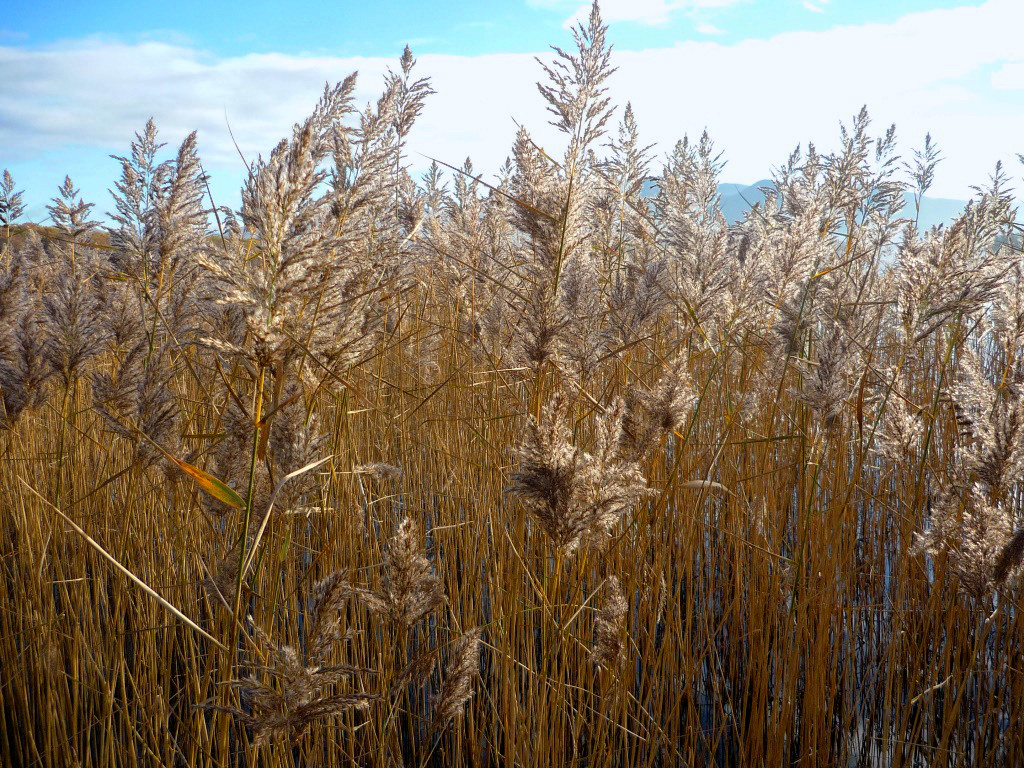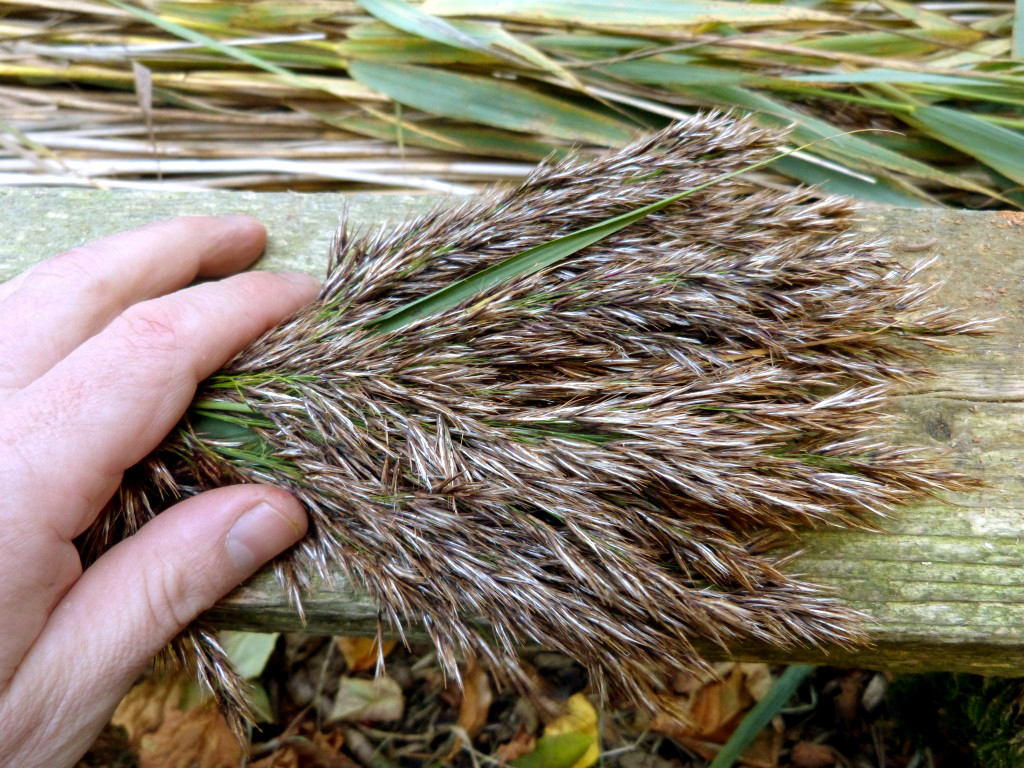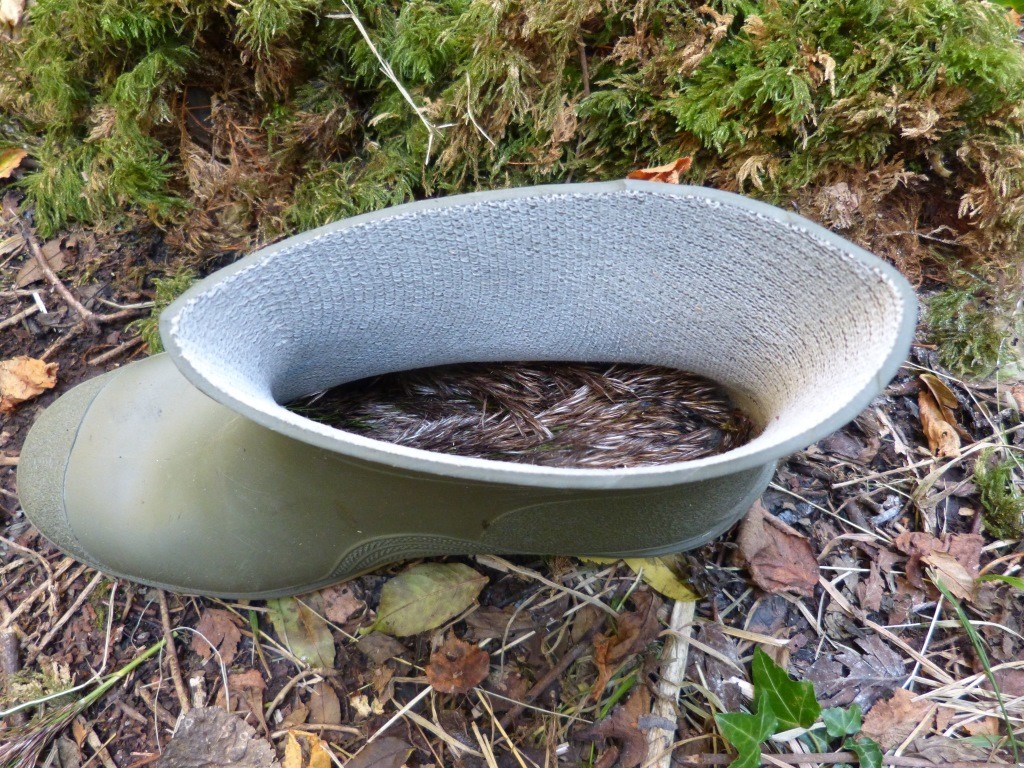By Sean Fagan

Reed beds are a great bushcraft & survival resource (Photo: Sean Fagan).
Reed Beds
.
A while back I was bird-watching beside a large reed bed.
I was wearing rubber wellington boots, which I often wear when walking on relatively flat terrain during damp, cold weather.
When wearing welly boots during the temperate winters of Ireland, my usual sock combination is a thin merino wool sock under a thicker wool sock. I also wear thick felt insoles.
It's a basic, comfortable and robust layering system and has worked great for myself over the years.
For example, when my feet get too warm, I can take off the thicker socks (and put them into a waterproof bag within my backpack - with my other spare pair of wool socks - in total, I carry one thin & two thick pairs of wool socks).
On this particular day I had forgotten my felt insoles and it was quite cold.
As I was bird-watching beside a large reed bed, I was static for lengthy bouts.
It didn't take long before the cold-sapping effects of conduction started to chill my feet.
The solution was simple - I stuffed my welly boots with dead, fluffy seed heads of nearby reeds.
The soft, absorbent seed heads were very insulating and comfortable - and my feet were warm for the rest of the day.
.

The soft, absorbent seed heads of the common reeds (Photo: Sean Fagan).
.
The seeds heads worked great as an insulator, mostly because of the many minuscule air pockets between the fluffy seeds.
Once the radiant heat of my feet warmed up the many air gaps between the seeds, a warming layer of air was easily trapped under the soles of my feet (trapped warm air is a great insulator).
* A few words of caution - fluffy seed heads work most effectively when dry. Wet seed heads can actually increase heat loss.
.

A thick layer of seed heads of reeds kept the soles of my feet warm and comfortable during a cold winter's day (Photo: Sean Fagan).
.
Reed Beds as a Life-Saver?
.
Reed beds produce prodigious quantities of seed heads that can be used for keeping the whole body warm in a relatively short time.
It doesn't take long to collect enough seed heads to stuff into gloves, hat and socks.
It can take a while longer to collect enough seeds to stuff the larger volume of space under clothing - but not that long.
This can be an important factor when time is tight and the potentially debilitating effects of cold-related conditions, such as hypothermia, are beginning to be felt.
By simply stuffing the seed heads into clothes, hat & gloves (or even into a sleeping bag) the body will be warmer - often a lot warmer.
This is a great bushcraft and survival tip when suffering from the cold in wild places that are in close proximity to reed beds (Reeds are often locally common with a remarkably board geographic distribution).
But the bushcraft uses of reeds do not end there.
Keep tuned for an upcoming article about the many important, bushcraft & survival uses of reeds in the near future.
Incidentally, reed beds are a fantastic, wildlife-rich habitat with many species of flora and fauna specifically adapted to living in reed beds - such as the water rail and the rarely seen but easily heard, bittern.
Otters also frequent reed beds - hunting for fish and freshwater shellfish that dwell within the murky waters of reed beds.
In light of the importance of reed beds as places of rich and often specialised biodiversity - please be frugal if harvesting the seed heads of reeds.
Avoid collecting the living seed heads of reeds, and select the dead seeds heads (easily recognisible by their pale brown, sandy colour (living seeds heads are often a deep purple colour)).
.
For a full description of common reeds, go to link at end of article.
Caution: sometimes it's necessary to wade into cold water in order to collect the seed heads of reeds which can hasten the chilling effects of hypothermia.
.
Bonus Tip: The dry, dead seed heads of reeds make a fantastic, spark-friendly tinder (more about this in a future post).
Don't forget, at the end of this article, I've included a clip from the 1975 film, Dersu Uzala (based on a true story) which shows how two men made a makeshift, insulating shelter from reeds, which enabled them to survive a freezing storm.
.
.
Related articles on this website:
- Improve your Outdoor Awareness with the Sit Spot
- The Importance of Winter Identification of Plants
- Winter Bushcraft
.
Resources:
.
*Check us out on Instagram, Twitter & Facebook for more outdoor-related topics..
In this scene (from the wonderful film, Dersu Uzala) two men are caught out on a snowy, exposed landscape with nightfall coming. Ingeniously, they collect a large mass of reeds to provide a make-shift, insulating shelter - enabling them to survive a freezing storm. Brilliant.
Recent Comments